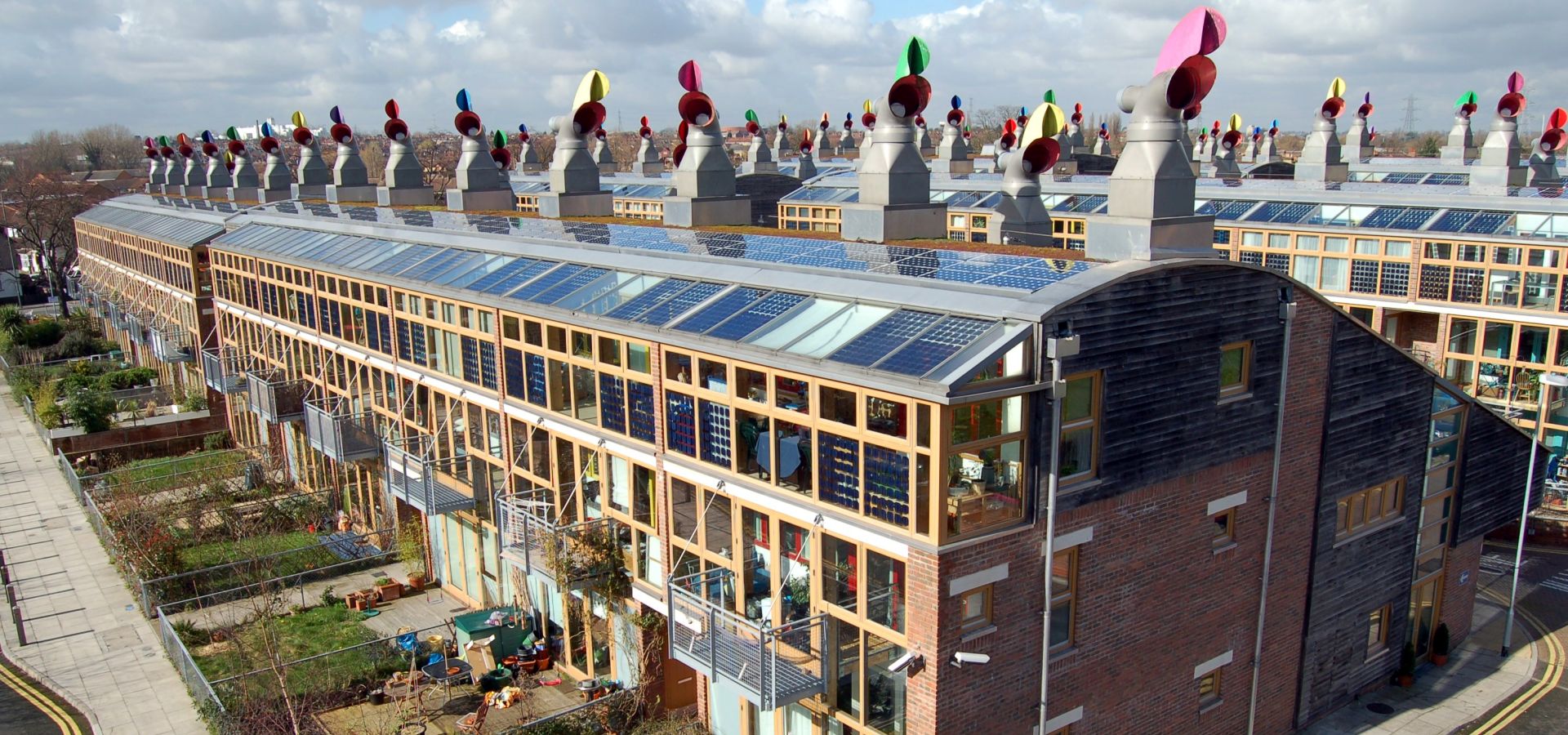Recently, we talked about the fact that Germany’s energy transition has been too electricity-focused. Today, John Grant describes what is necessary for more efficient buildings: the support and understanding of the construction industry.

Many small eco-friendly developments – like BEZED, pictured here – still aren’t enough (Photo by Tom Chance, edited, CC BY 2.0)
The opening in January 2017 of an “eco-hamlet” for council house tenants in West Wales is great news. I have nothing but praise for a development which builds houses with a low carbon footprint, using locally grown wood, to make homes which are well insulated and powered by solar energy. It was also quick to build, with large sections being made in a factory and then assembled on site. And it was relatively cheap – at around £70,000 to £100,000 per building, it is certainly comparable to the costs of more conventional builds.
These houses are an inspiration to the construction industry and an aspiration for the home owner. After all, who wouldn’t like to live in a house that had yearly utility bills of £200, rather than the national average of £1,500?
So the problem is not the six wonderful solar houses at Glanrhyd, Pembrokeshire, or the lucky people who will get to live in them (and enjoy shared use of an electric car). The problem is that we’ve seen all of this before – but nothing changes. What we really need is far, far more of them.
I’ve been involved in sustainable construction for nearly 25 years and seen many inspirational developments like Glanrhyd. There’s Julian Marsh’s home in Nottingham, Susan Roaf’s Oxford Ecohouse and the Hockerton Housing Project, to name but a few. The list is long.
Yet while many individuals continue to build these innovative and inspirational structures, we have a construction industry which still responds to these buildings with disdain. One executive from a large well-known house building company told me in conversation recently: “This is a new, expensive and untested technology. We just can’t risk building something so new with all the risks to the consumer and at a higher cost.”
But the situation is even worse than the disdain from the mainstream construction industry. Rather than being welcomed, the latest versions of these sustainable buildings are challenged at every turn. The initial response to the Welsh eco-hamlet plans were concerns about the materials, the technology and the design. The houses at Glanrhyd then had more than 20 planning conditions placed upon them. The CEO of Western Solar, the company behind the hamlet, freely admits that nearly half of their research budget went on solving problems they encountered along the way.
Thinking and building big
So it seems this kind of development just isn’t celebrated enough. There is a general atmosphere of mistrust from construction professionals. It is seen as too complex, too expensive, too risky. Yet there are positive reactions, too. Welsh politician Lesley Griffiths had this to say about the new houses in Glanrhyd:
“This scheme ticks so many boxes. We need more houses, we need more energy efficiency, we want to help people with fuel poverty. It’s been really good to hear how they have sourced local products. It’s great they’re using local people to build the houses.”
Surely we need to take the eco-technology we have and start rolling it out on a much larger scale. To do so would be a massive step in meeting the significant housing shortage (an estimated 125,000 new houses are needed every year). It would also address the disrepair of our current housing stock, and help refit the millions of houses in good repair but requiring improved performance in order to achieve the government’s 2050 carbon reduction target.
We must not forget that the 2050 Climate Change target is not some arbitrary political policy, but one based on the environmental challenge facing all of us. We need to play our part in slowing down the speed of climate change and adapting to the changing natural, social and economic environment.
The solar houses in Pembrokeshire are wonderful. But until we start building huge numbers of buildings with similar credentials, we are just celebrating a cottage industry rather than restructuring our urban environment for an uncertain future.
This article was originally published on The Conversation.
John Grant is a senior lecturer and course leader of the BSc Built Environment Course at Sheffield Hallam. In addition to his research, he lectures on issues of Energy, Buildings and integrated renewable energy systems, Climate Change, Sustainability in the Built Form and Environmental Management.